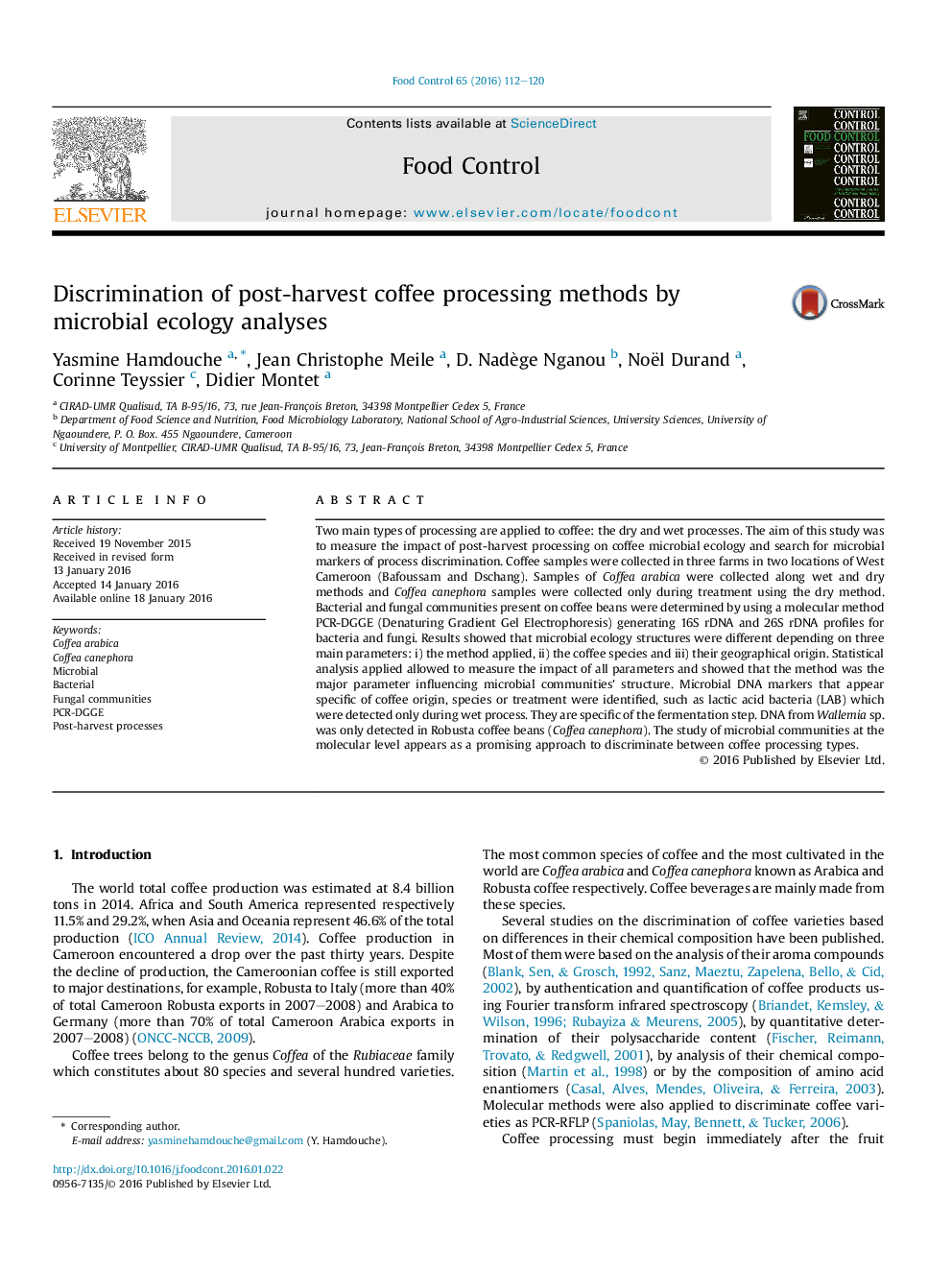| کد مقاله | کد نشریه | سال انتشار | مقاله انگلیسی | نسخه تمام متن |
|---|---|---|---|---|
| 4559083 | 1628397 | 2016 | 9 صفحه PDF | دانلود رایگان |
• Microbial ecology of coffee varied according to post-harvest processing applied.
• Coffee species used has an impact on microbial community structure.
• LAB are specific markers to coffee obtained by wet method.
Two main types of processing are applied to coffee: the dry and wet processes. The aim of this study was to measure the impact of post-harvest processing on coffee microbial ecology and search for microbial markers of process discrimination. Coffee samples were collected in three farms in two locations of West Cameroon (Bafoussam and Dschang). Samples of Coffea arabica were collected along wet and dry methods and Coffea canephora samples were collected only during treatment using the dry method. Bacterial and fungal communities present on coffee beans were determined by using a molecular method PCR-DGGE (Denaturing Gradient Gel Electrophoresis) generating 16S rDNA and 26S rDNA profiles for bacteria and fungi. Results showed that microbial ecology structures were different depending on three main parameters: i) the method applied, ii) the coffee species and iii) their geographical origin. Statistical analysis applied allowed to measure the impact of all parameters and showed that the method was the major parameter influencing microbial communities' structure. Microbial DNA markers that appear specific of coffee origin, species or treatment were identified, such as lactic acid bacteria (LAB) which were detected only during wet process. They are specific of the fermentation step. DNA from Wallemia sp. was only detected in Robusta coffee beans (Coffea canephora). The study of microbial communities at the molecular level appears as a promising approach to discriminate between coffee processing types.
Journal: Food Control - Volume 65, July 2016, Pages 112–120
